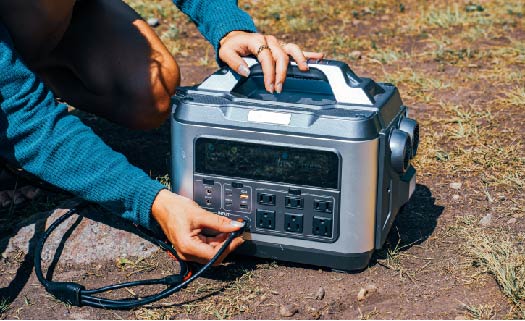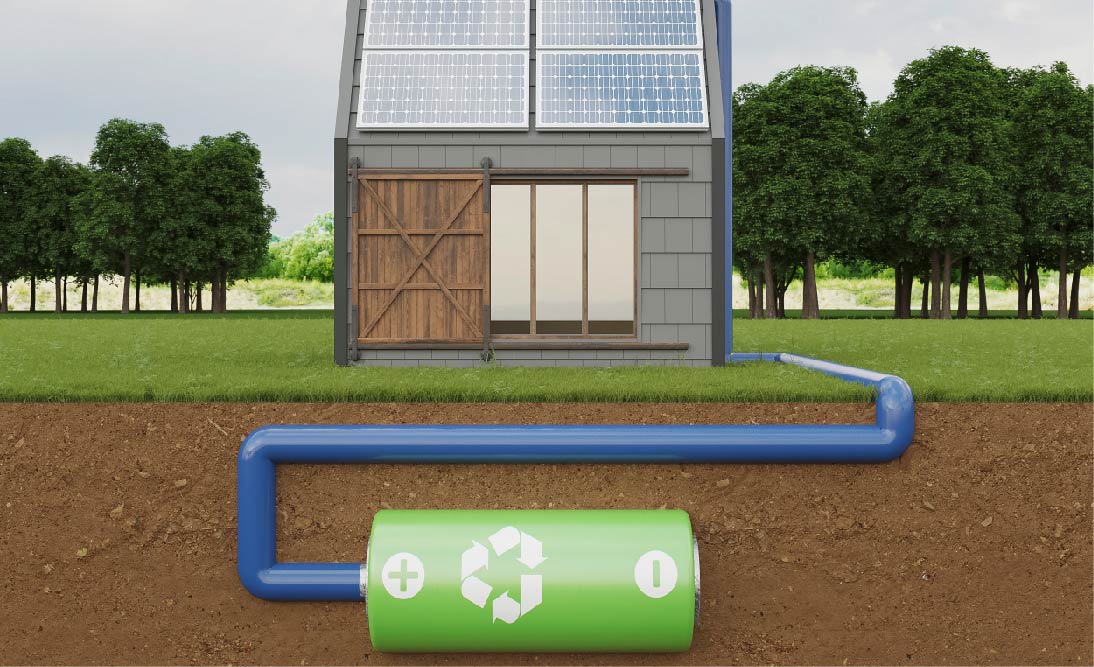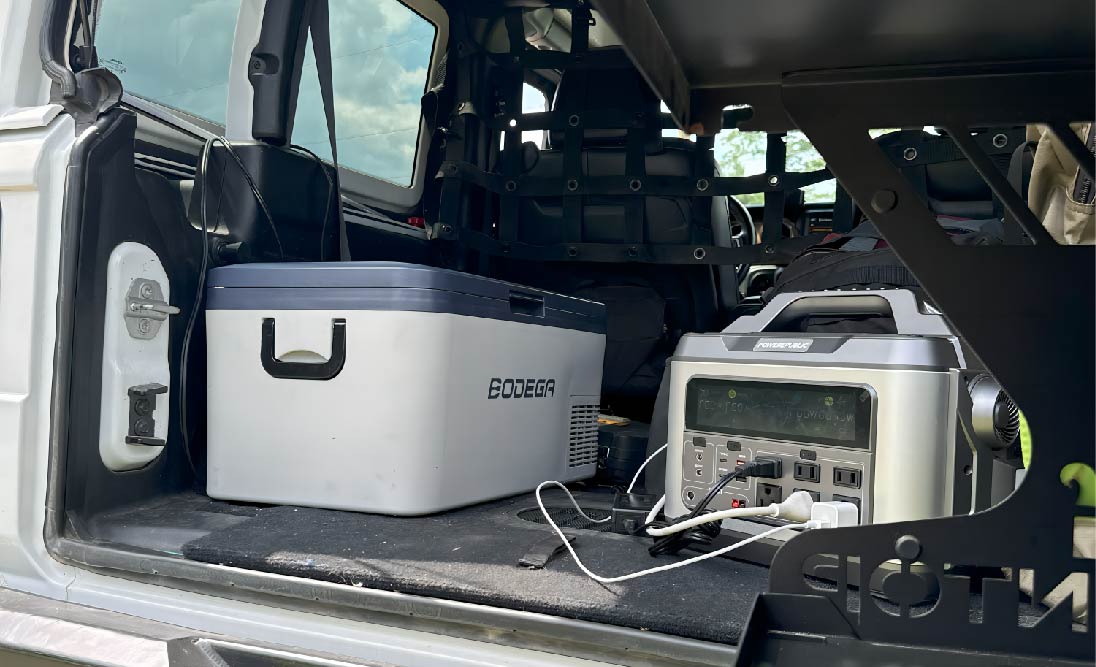Recently, electric cars have become popular. They are popular because they are environmentally friendly and save money on fuel. But sometimes, it can be tricky to find a place to charge them. Even though there are more charging stations around, you might still run into problems on long trips.
That's where portable power stations come in. They can help you charge your electric car when you're on the go. But here's the thing: these power stations are more like emergency backups for electric car owners. They're not meant to replace regular charging stations.
In this article, we'll talk about using portable power stations to charge your electric car. We'll explain how they work, why they can be useful, what their limitations are, and what you should think about if you're interested in using one. So, let's dive in and learn more!
Understanding Portable Power Stations
Portable power stations, also known as portable solar generators, battery generators, or portable chargers, are compact devices that store electrical energy in built-in batteries. They are designed to provide power for various electronic devices and appliances, from smartphones to refrigerators, in situations where a grid connection is unavailable or unreliable.
Components and Specifications
Typically, a portable power station consists of :
-
A battery pack
-
An inverter
-
Charge Controllers
-
Various input/output ports
The battery pack stores energy from a power source, such as solar panels or the electric grid, while the inverter converts the stored DC (direct current) energy into AC (alternating current) power, which is compatible with most electronic devices.
The Feasibility of Charging an EV
Power Output and Charging Speed
To charge an EV using a portable power station, it is important to assess the power output and charging speed of the device(battery capacity).
Portable power stations vary widely in terms of their battery capacity, measured in watt-hours (Wh) or kilowatt-hours (kWh), as well as the power output they can deliver at any given time, usually measured in watts (W) or kilowatts (kW). Besides that, it is important to know the surge power of a portable power station, as some devices, appliances, or EVs may require a huge amount of power to start. The surge power of a portable power station usually doubles its rated power. For example, POWEREPUBLIC T3000 has a rated power of 3000W, with a surge power of 6000W.
Furthermore, if you are searching for a portable power station to charge your EV, make sure to go for one with higher-rated power and battery capacity. If the rated power and battery capacity are too low, the portable power station may not be able to charge your EV.
Charging Connector Compatibility
When it comes to charging an electric vehicle (EV) using a portable power station, consider the compatibility of charging connectors to ensure they are supported by both the portable charger and your EV. The most common charging connector types are:
-
J1772 (Level 1 and Level 2): This connector type is the standard for charging electric vehicles in North America. Many portable power stations come with built-in J1772 connectors, allowing you to charge your EV using the power station's AC outlets. However, keep in mind that charging an EV with a portable power station typically provides slower charging speeds compared to dedicated EV charging stations.
-
Type 2 (IEC 62196): This connector type, commonly used in Europe, is compatible with both Level 2 AC charging and Level 3 DC fast charging. Some portable power stations in Europe may offer Type 2 connectors for EV charging.
-
CHAdeMO and CCS (Combined Charging System): These connector types are used for DC fast charging, providing rapid charging for EVs. Portable power stations are less likely to support CHAdeMO and CCS connectors due to their higher power requirements and complexities. They are more commonly found in dedicated EV charging stations.
In general, it's crucial to check the specifications and capabilities of both your portable power station and your EV to ensure compatibility. The power station should explicitly mention support for EV charging and specify the connector types it can accommodate.
Remember that portable power stations are typically designed for emergency backup or off-grid use and may not be the most efficient or practical long-term solution for charging an EV. Find dedicated EV charging stations or home charging solutions to offer faster and more convenient charging options.
Charging Time and Battery Capacity
The charging time for an electric vehicle (EV) using a portable power station depends on several factors, including the power output of the power station, the battery capacity of the EV, and the charging rate supported by the EV. Here are some key factors:
-
Power Output of the Portable Power Station: Portable power stations have different power output ports, typically measured in watts (W) or kilowatts (kW). The higher the power output of the power station, the faster it can charge your EV.
-
Battery Capacity of the EV: The battery capacity of an EV is usually measured in kilowatt-hours (kWh) and indicates the amount of energy the energy stores. The larger the battery capacity, the longer it will take to charge. For example, a portable power station may take longer to charge an EV with a larger battery capacity compared to one with a smaller capacity. It is important to know that a portable power station cannot fully recharge an EV. It is more like an emergency backup solution.
-
Charging Rate Supported by the EV: Electric vehicles support different rates for charging, commonly categorized as Level 1, Level 2, and Level 3 (DC fast charging). Level 1 uses a standard household outlet (120V AC) and provides the slowest charging speed. Level 2 requires a dedicated charging station (240V AC) and offers a faster charging speed. Level 3 (DC fast charging) provides the fastest charging rate but requires specialized charging infrastructure, like dedicated EV charging stations or home charging solutions.

It's important to note that charging an EV with a portable power station may take longer compared to using a dedicated charger. To estimate the charging time, you can use the following formula to estimate:
Charging time (hours) = Battery capacity of the EV (in Wh/kWh) / Power output of the power station (in W/KW)
Keep in mind that this formula provides an estimate. Factors like charging efficiency, battery condition, and other variables should also be considered as they affect the actual charging time.
Advantages of Portable Power Stations for EV Charging
-
Convenience: They eliminate the need for dedicated charging infrastructure, allowing EV owners to charge their vehicles wherever they have access to a power source. It is very beneficial for those who do not have access to a fixed charging station or when traveling to areas with limited charging infrastructure.
-
Mobility: Portable power stations are designed to be lightweight and compact, making them ideal for transport and carry-around, allowing EV owners to charge their vehicles on the go. This mobility is especially useful for outdoor enthusiasts, adventurers, and individuals living in areas with unreliable power supplies.
-
Emergency Backup: In case of power outages or natural disasters, they can provide electricity not only for charging EVs but also for powering essential appliances, lights, or medical devices. This versatility makes them an excellent backup power solution.
-
Versatility: Many portable power stations are equipped with multiple charging ports and outlets, allowing them to charge not only EVs but also other electronic devices at the same time.
-
Environmental Sustainability: Using portable power stations for EV charging promotes environmental sustainability. EV owners can reduce their carbon footprint and contribute to a cleaner energy future. Portable power stations offer a flexible and eco-friendly alternative to traditional fossil fuel-based transportation.
Please note that the advantages of portable power stations can vary depending on the model, capacity, and features of the device. So please make sure to check the compatibility between the power station and your EV before purchasing one.
Limitations and Challenges
While portable power stations for EV charging offer various advantages, they also have limitations. Here are some limitations and challenges associated with portable power stations for EV charging:
-
Limited Charging Capacity: Portable power stations typically have lower charging capacities compared to fixed charging stations. This means that they may not be able to charge an EV fully. The charging speed and efficiency of portable power stations are limited by their size, portable design, rated power, and battery capacity.
-
Battery Capacity and Range: Portable power stations rely on built-in batteries for storing and delivering electricity. The battery capacity of these stations is finite, and they need to recharge themselves to charge other devices and appliances. This limitation can impact the range and number of EV charges that can be provided before the power station needs to be recharged from a grid connection or other power source.
-
Charging Time: Due to their charging capacities and battery capacities, portable power stations may require longer charging times to fully recharge an EV compared to high-power fixed charging stations. This can be a limitation for EV owners who require quick or frequent charging.
-
Energy Source Availability: Portable power stations need access to a reliable energy source for recharging their batteries. While they can be charged from a standard electrical outlet or solar panels, the availability of these energy sources can vary depending on location and weather conditions. In some remote areas or during poor weather conditions, it may be challenging to find a suitable energy source for recharging the portable power station.
-
Portability and Weight: While the portability of power stations is an advantage, it can also be a limitation like a double-edged sword. Some high-capacity portable power stations can be relatively heavy and bulky, making them difficult to transport over long distances.
It's important to take these limitations and challenges into consideration when evaluating the suitability of portable power stations for EV charging, as they may affect your true experiences.
Conclusion
In summary, the advent of portable power stations has opened up new possibilities for electric vehicle (EV) charging, allowing us to tap into power on the go.
These versatile and compact devices provide numerous advantages, such as convenience, mobility, emergency backup, versatility, and environmental sustainability, making them particularly valuable in areas with limited charging infrastructure or for individuals who frequently travel or engage in outdoor activities.
However, portable power stations also face certain limitations and challenges. Their charging capacities may be lower than fixed charging stations, resulting in longer charging times. Battery capacity and range can be limiting factors, requiring periodic recharging of the power station itself. The availability of energy sources for recharging can also pose challenges in remote or emergencies.
























































